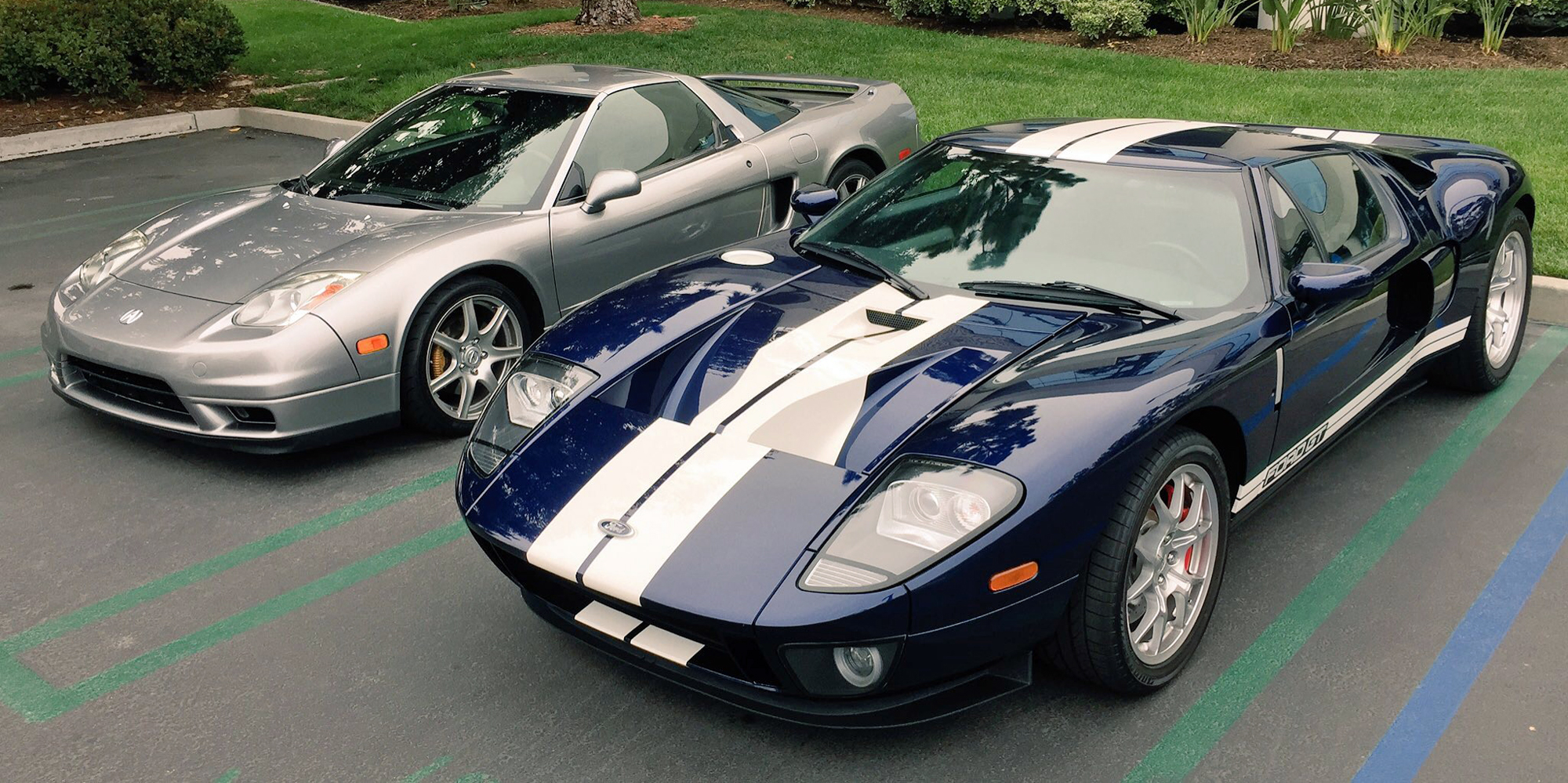In 2005 the Ford GT was a brand new mid-engine sports car from America. That same year the lifecycle of an aging mid-engine sports car from Japan, the Acura NSX, was coming to an end. The brief crossover of these two cars provided an intriguing glimpse in sports car evolution.
One of the first things I noticed about the GT and NSX is how low the Ford sits, even by first-generation Acura NSX standards. The NSX is not a “big” car by any stretch of the imagination. In fact, its tidy dimensions and lightweight aluminum structure were considered cutting edge technology when it debuted in 1991. But when sitting next to the Ford GT the Acura NSX doesn’t look as low-slung as the GT, and careful analysis confirmed it is indeed slightly taller than Ford’s 2005 supercar.
Driving the two back-to-back was also fascinating. When I drove the Ford GT in 2004 I called it “a Viper-powered NSX” because it feels as responsive and buttoned down as the first-gen Acura NSX while having the raw power of Dodge’s V10 supercar. This opinion was re-confirmed when I drove this 2005 NSX press car in June of 2016. The Acura remains a tremendous driving experience, with the exception of its slow steering ratio. If you bought one and updated the steering ratio it would still offer competitive handling against many of today’s mid-tier sports cars (Boxster, TT, Corvette, etc.).
But the power from the 3.2-liter V6 in the NSX was never considered stellar, even when they were new. In today’s world the car would be challenged on a track by a V6 Camaro or Mustang, and wouldn’t keep up with V8 versions of those cars simply because of its power deficit. Against a 2005 Ford GT it wouldn’t have a chance.


